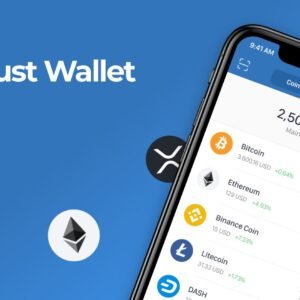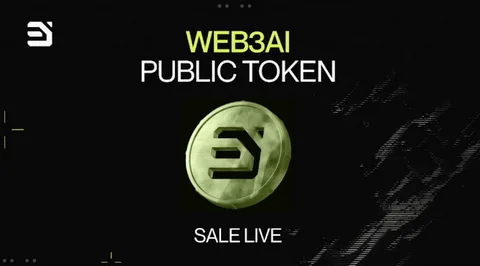Introduction
Dominik Schiener is a name synonymous with the next evolution of blockchain technology. He has been at the forefront of driving technological advancements that aim to solve the scalability, security, and usability challenges plaguing traditional blockchains.
His work with IOTA 2.0 and Web3 represents a leap forward in the decentralized ecosystem, providing solutions that will impact industries ranging from supply chain management to IoT (Internet of Things) and beyond.
In this article, we will delve into the discussions that Dominik Schiener has led around Web3, how IOTA 2.0 serves as a backbone for decentralized applications (dApps), and the broader potential for real-world asset innovations. The combination of these elements presents a compelling vision for the future of a decentralized and interconnected world.

Understanding Web3 and Its Importance
What is Web3?
Web3, also referred to as the decentralized web, is a vision for the future of the internet, where decentralized applications (dApps) operate on blockchains or similar distributed networks rather than on centralized servers. It aims to return ownership of data, privacy, and digital assets to users, challenging the centralized control exerted by today’s tech giants. Dominik Schiener is an ardent proponent of this transition and believes that Web3 will play a central role in democratizing access to technology.
In Schiener’s perspective, Web3 is more than just a new phase of the internet; it’s the foundation for a trustless and transparent world. He sees it as a necessary evolution from Web2, where individuals are often mere products of centralized platforms.
In Web3, users gain sovereignty over their data, control over their assets, and the ability to participate in decentralized finance (DeFi) and governance models. Schiener’s commitment to this transformation is seen in his work on IOTA, a platform designed to address the limitations of existing blockchain protocols, specifically for the Web3 revolution.
Dominik Schiener’s Vision for Web3
For Schiener, the core principles of Web3—decentralization, interoperability, and user empowerment—must be at the heart of every technological development. IOTA 2.0 is set to fulfill these promises by creating an architecture that is feeless, scalable, and energy-efficient, removing many of the barriers to widespread blockchain adoption.
According to Schiener, Web3 will enable industries to build more secure, scalable, and cost-effective solutions for real-world problems, and IOTA 2.0 will be a significant player in making that future a reality.
IOTA 2.0 – A Deep Dive
The Evolution from IOTA to IOTA 2.0
IOTA 2.0 represents a significant upgrade to the original IOTA protocol, which was designed to facilitate secure communication and payments between devices in the Internet of Things (IoT) ecosystem.
The original IOTA protocol employed the “Tangle” – a decentralized acyclic graph (DAG) structure that provided benefits in terms of scalability and fee-less transactions. However, as the network grew, the need for a more advanced and secure version became evident.
Dominik Schiener has been a pivotal figure in leading the evolution towards IOTA 2.0, which introduces Coordicide—the removal of the central coordinator that was used to validate transactions in the original IOTA network.
This is a monumental shift, as Coordicide transforms IOTA into a fully decentralized and scalable ledger. IOTA 2.0 is expected to offer more robust security, faster confirmation times, and a more decentralized governance model.
Key Features of IOTA 2.0
- Feeless Transactions: One of the most exciting features of IOTA 2.0 is its ability to provide feeless transactions, which opens up new possibilities for micropayments and decentralized applications that are too cost-prohibitive on traditional blockchains.
- Scalability: Unlike many other blockchains that face scalability bottlenecks, IOTA 2.0 is built to scale as the number of users and devices grows. This is particularly important for IoT applications, where billions of devices are expected to be connected in the coming years.
- Energy Efficiency: With increasing concerns about the environmental impact of blockchain, IOTA 2.0 stands out for its energy-efficient design, aligning with Schiener’s broader vision for sustainable technology solutions.
Schiener envisions IOTA 2.0 as the backbone for future decentralized applications, providing the infrastructure needed to support everything from decentralized finance (DeFi) to real-world asset innovations.
Real-World Asset Innovations Powered by IOTA
The Role of Blockchain in Asset Tokenization
One of the most promising applications of blockchain technology is the tokenization of real-world assets. This process involves creating digital tokens that represent ownership of physical or financial assets, such as real estate, commodities, or securities, on a blockchain. Dominik Schiener believes that IOTA 2.0, with its unique Tangle architecture, is well-positioned to drive innovations in this space.
Real-world asset tokenization has the potential to revolutionize industries by offering increased liquidity, transparency, and security. For example, tokenizing real estate could allow smaller investors to purchase fractional ownership of properties, opening up new investment opportunities. Similarly, commodities like gold or oil can be digitized, making them easier to trade and manage.
Schiener’s Vision for Asset Innovations
In recent discussions, Dominik Schiener highlighted the importance of integrating real-world assets into decentralized systems. He believes that IOTA’s ability to provide feeless and scalable transactions will play a critical role in enabling this integration.
The IOTA network could be used to tokenize assets ranging from artwork to supply chain commodities, bringing them into the digital world in a transparent and secure manner. Schiener has expressed that the future of blockchain lies in its ability to bridge the gap between the physical and digital worlds, creating new opportunities for investors, businesses, and consumers alike.
The Intersection of Web3, IOTA 2.0, and Asset Innovations
Enabling a New Digital Economy
The combination of Web3, IOTA 2.0, and real-world asset innovations is set to redefine how we interact with the digital economy. Dominik Schiener envisions a future where decentralized applications seamlessly integrate with real-world assets, enabling trustless and efficient transactions that are not dependent on traditional financial intermediaries. This could lead to a more inclusive and transparent global economy, where individuals have more control over their financial future.
Real-World Applications
There are already several real-world applications where the intersection of Web3, IOTA 2.0, and asset tokenization is being explored. For instance, in the supply chain industry, IOTA’s Tangle technology can be used to track the provenance of goods, ensuring transparency and reducing fraud.
In the world of decentralized finance (DeFi), IOTA 2.0 can enable new financial instruments that allow individuals to use tokenized real-world assets as collateral for loans or other financial services.
Dominik Schiener is optimistic about the potential for these innovations to create a more equitable and efficient financial system. He believes that as more industries begin to adopt blockchain technology, IOTA will be at the forefront of driving real-world asset integration and decentralized finance.
Conclusion
Dominik Schiener’s insights into Web3, IOTA 2.0, and real-world asset innovations paint an exciting picture of the future of decentralized technology. Through his work with the IOTA Foundation, Schiener is helping to build the infrastructure needed for a new digital economy, one where individuals have more control over their assets and data.
As Web3 continues to evolve and IOTA 2.0 gains traction, the integration of real-world assets into the blockchain ecosystem will open up new possibilities for industries and individuals alike. Schiener’s vision is not just about technology—it’s about creating a more inclusive, transparent, and sustainable world.
What do you think about the future of Web3 and real-world asset tokenization? Share your thoughts in the comments below!






